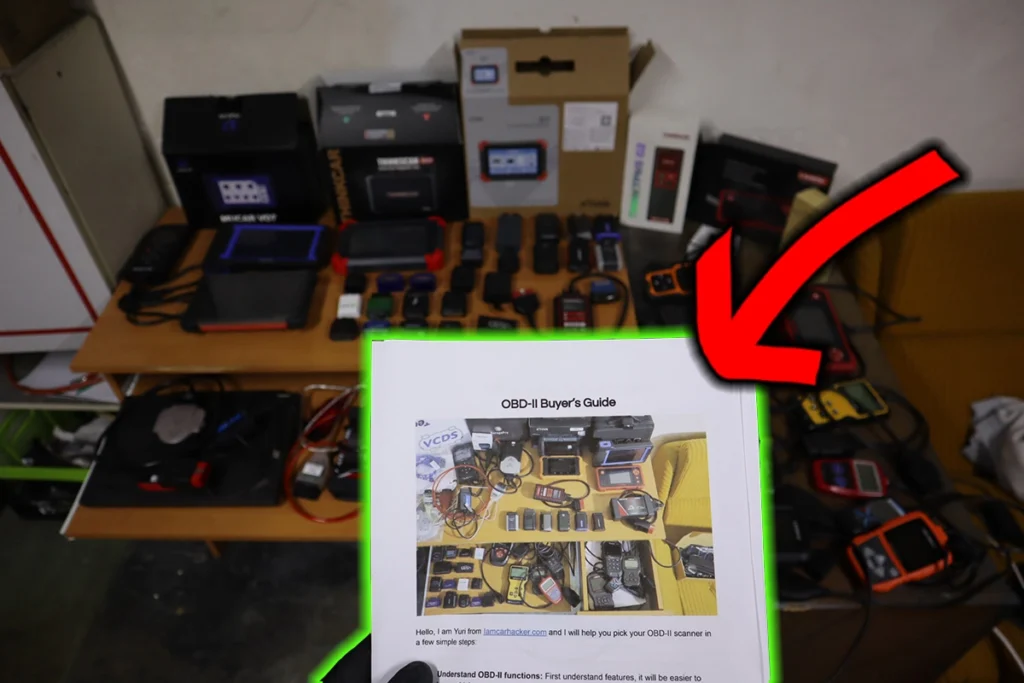The P2588: Turbocharger Boost Control Position Sensor ‘B’ Circuit Low code indicates that the voltage or signal from the turbocharger boost control position sensor ‘B’ is lower than expected. This could be due to a faulty sensor, wiring issues, or poor electrical connections that prevent the sensor from sending an accurate signal to the ECM.
P2588 – Quick Overview
| Code | Information |
|---|---|
| Meaning | P2588: Turbocharger Boost Control Position Sensor ‘B’ Circuit Low |
| Is it serious? | Yes, as a low voltage signal can result in inaccurate turbo boost control, potentially leading to reduced performance, poor fuel efficiency, or even turbocharger damage. |
| Possible causes | – Low voltage or signal in the turbocharger boost control position sensor ‘B’ circuit – Faulty turbocharger boost control position sensor ‘B’ – Wiring or connector issues |
| How to diagnose? | – Measure the voltage in the turbocharger boost control position sensor ‘B’ circuit – Inspect and test the turbocharger boost control position sensor ‘B’ – Check wiring and connectors – Replace faulty components if needed |
P2588 Meaning
The P2588: Turbocharger Boost Control Position Sensor ‘B’ Circuit Low code is triggered when the ECM detects that the voltage coming from the turbocharger boost control position sensor ‘B’ is lower than the expected value. This low signal may indicate an electrical issue such as a short to ground, faulty sensor, or poor connectivity, preventing the ECM from correctly managing turbo boost pressure.
Step-by-step diagnostic guide
| Action | Description | Tools Needed |
|---|---|---|
| Check for Other Related Codes | Use an OBD-II scanner to determine if there are other related fault codes that may indicate further issues with the turbo system or sensor circuits. These related codes can provide additional insight. | OBD-II Scanner |
| Measure Voltage in the Sensor Circuit | Use a multimeter to measure the voltage of the turbocharger boost control position sensor ‘B’ circuit. Compare the voltage reading to the manufacturer’s specifications to determine if it falls within the expected range. A lower-than-expected reading indicates an issue. | Multimeter |
| Inspect the Turbocharger Boost Control Position Sensor ‘B’ | Visually inspect the sensor for any signs of damage, corrosion, or disconnection. Make sure it is securely mounted and that no physical damage is evident. | Flashlight, Safety Gloves |
| Test the Turbocharger Boost Control Position Sensor | Use a diagnostic scanner to observe the live data from the sensor. Verify that the sensor output is consistent with the turbocharger’s operation. If the voltage remains low or erratic, it may indicate a defective sensor. | Diagnostic Tool, Multimeter |
| Check Wiring and Connectors | Inspect all wiring and connectors associated with the sensor. Look for frayed wires, loose connections, or corrosion that could cause a short circuit or resistance, leading to low voltage signals. | Flashlight, Multimeter |
| Repair or Replace Faulty Wiring/Connectors | Repair any damaged wiring and replace corroded connectors. Ensure all connections are tight and free from corrosion to provide a clear and uninterrupted electrical path. | Basic Tools, Replacement Parts |
| Replace Faulty Sensor | If the sensor itself is faulty and not providing the correct voltage or output range, replace it. Ensure the replacement sensor is installed correctly to maintain accurate boost control. | Replacement Boost Control Sensor |
| Clear the Code and Test Drive | After completing the necessary repairs, use an OBD-II scanner to clear the fault code. Test drive the vehicle while monitoring the boost control data to ensure the sensor is functioning properly and that the code does not return. | OBD-II Scanner, Vehicle Owner’s Manual |
| Recheck for Codes | Re-scan the vehicle using an OBD-II scanner to confirm that the P2588 code has been cleared. If the code persists, further diagnostics may be required to identify any remaining issues with the turbocharger system. | OBD-II Scanner |
Free PDF: How to choose OBD2 scanner

I’ve made you a free PDF to choose the OBD2 scanner in 5 minutes.
✅ Which OBD2 scanner is best?
✅ Which type should you get (DIY, Pro, Hobby)
✅ What is the best scanner for the exact brand/feature (e.g best for BMW)
✅ How to get a Bi-Directional tool for as cheap as $40
✅ Discount coupons for scanners
PDF is 100% free and it is designed to help you pick a scanner in less than a few minutes! Not a boring 50-page guide.
Just tell me where to send it.

Hi, I am Juraj “Yuri” Lukacko. I got frustrated by unhelpful and scammy mechanics, so I decided to learn everything about car diagnostics myself. I test dozens of new car diagnostic tools every month along with learning new strategies to fix and customize cars. About Juraj Lukacko (Yuri)